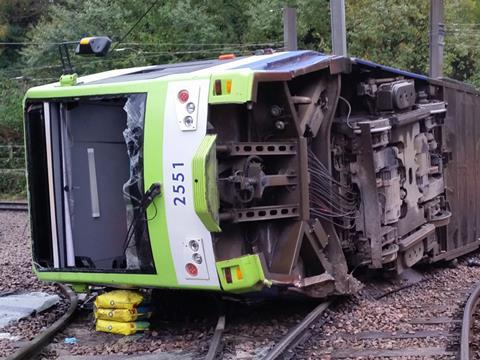
Will technology make travel safer? It certainly has the potential to do so, as recent developments in the tram sector have shown. Several manufacturers, including Bombardier, are developing tools that could help to prevent collisions and overspeed incidents.
Safety initiatives are not limited to new technology, of course, and this is true with trams as elsewhere. The UK recently set up a light rail safety and standards board, which aims to share best practice among the country’s tram operators. The establishment of LRSSB was prompted by a serious derailment in London in 2016, but light rail is on the whole among the safest forms of public transport, as Chief Executive Peter Cushing has pointed out. Nevertheless, there is always room for improvement.
Technological advances can also bring about unintended consequences for safety, both good and bad. As West Midlands Metro Director Phil Hewitt points out, onboard energy storage that enables trams to run off-wire makes it more practical for high-voltage overhead wires to be removed from city streets where they could be close to buildings and people. Safety is not usually the main reason for removing catenary, but it is an added bonus, albeit a smaller one than those potentially achievable through collision detection and overspeed protection systems.
Onboard energy storage could bring risks of its own. As bus, tram and metro manufacturers look into batteries, supercapacitors and hydrogen fuel cells, measures must be put in place to minimise the risks associated with them.
Petrol and diesel have been a part of city transport long enough for effective safety measures to have been developed, but this maturity and understanding must now be transferred to novel traction systems. The risks were demonstrated with unfortunate timing when Transport for London awarded Nel Hydrogen a contract to supply a bus refuelling station at around the same time as a refuelling station in Norway exploded.
More interesting are the safety implications of autonomous vehicles running on public roads. Attention has rightly been given to the onboard technology that enables road vehicles to operate without drivers, but the design of infrastructure also plays a part. This is not only true for roads with autonomous vehicles, but such projects could offer a rare chance to redesign existing streets, albeit on a limited scale.
Roads can be made safer and friendlier for all users through a variety of relatively simple interventions, including lower speed limits, awareness campaigns and tougher punishments for drivers that flout the rules of the road. Rebalancing city streets in this way would also have a welcome side-effect of encouraging public transport use by reducing the convenience gap between bus, tram and rail and private cars.
Karol Zemek is the Editor of Metro Report International














